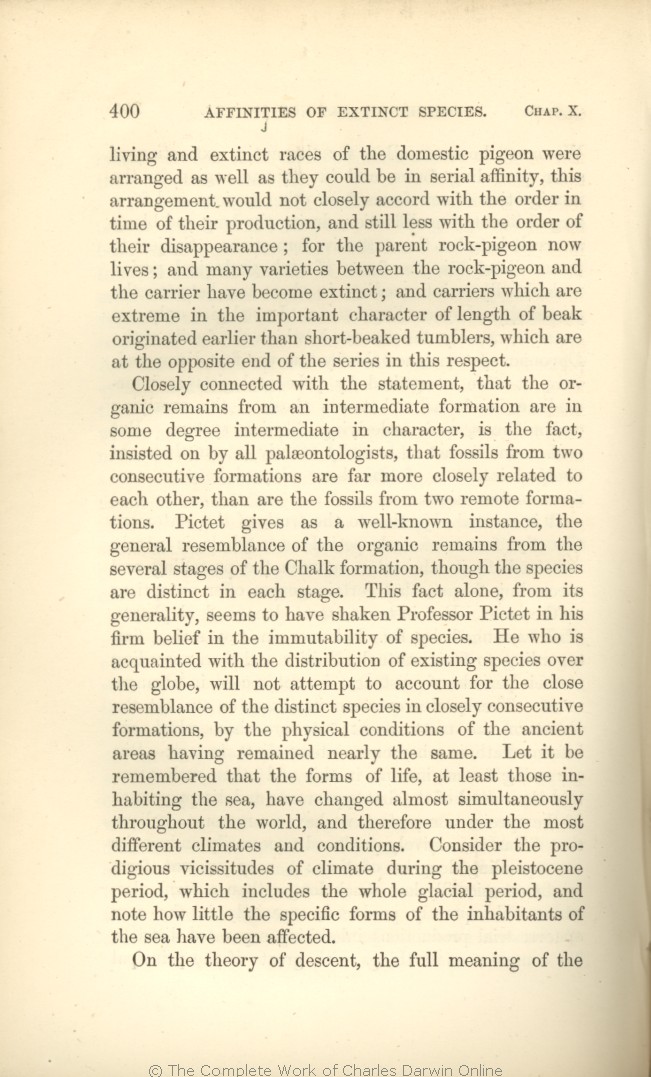living and extinct races of the domestic pigeon were arranged
as well as they could be | as well as they could be 1859 1860 1861 1866 1869 |
| OMIT 1872 |
| closely accord 1859 1860 1861 1866 1872 | | accord closely 1869 |
| still 1859 1860 1861 1866 | | even 1869 1872 |
| now 1859 1860 1861 1866 | | still 1869 1872 |
| ..... 1861 1866 1869 1872 | | same 1859 1860 |
|
|
Closely connected with the statement, that the organic remains from an intermediate formation are in some degree intermediate in character, is the fact, insisted on by all palæontologists, that fossils from two consecutive formations are far more closely related to each other, than are the fossils from two remote formations. Pictet gives
as | as 1859 1860 1861 1866 1872 | | us 1869 |
| Chalk 1860 1861 1866 1869 1872 | | chalk 1859 |
| firm 1859 1860 1861 1866 1869 | firm 1872 |
| the 1859 1860 1861 1866 | the 1869 1872 |
| prodigious 1859 1861 1866 1869 1872 | | pro- digious 1860 |
| period, 1859 1860 1861 1866 | | epoch, 1869 1872 |
|
|
| On the theory of descent, the full meaning of the
|









